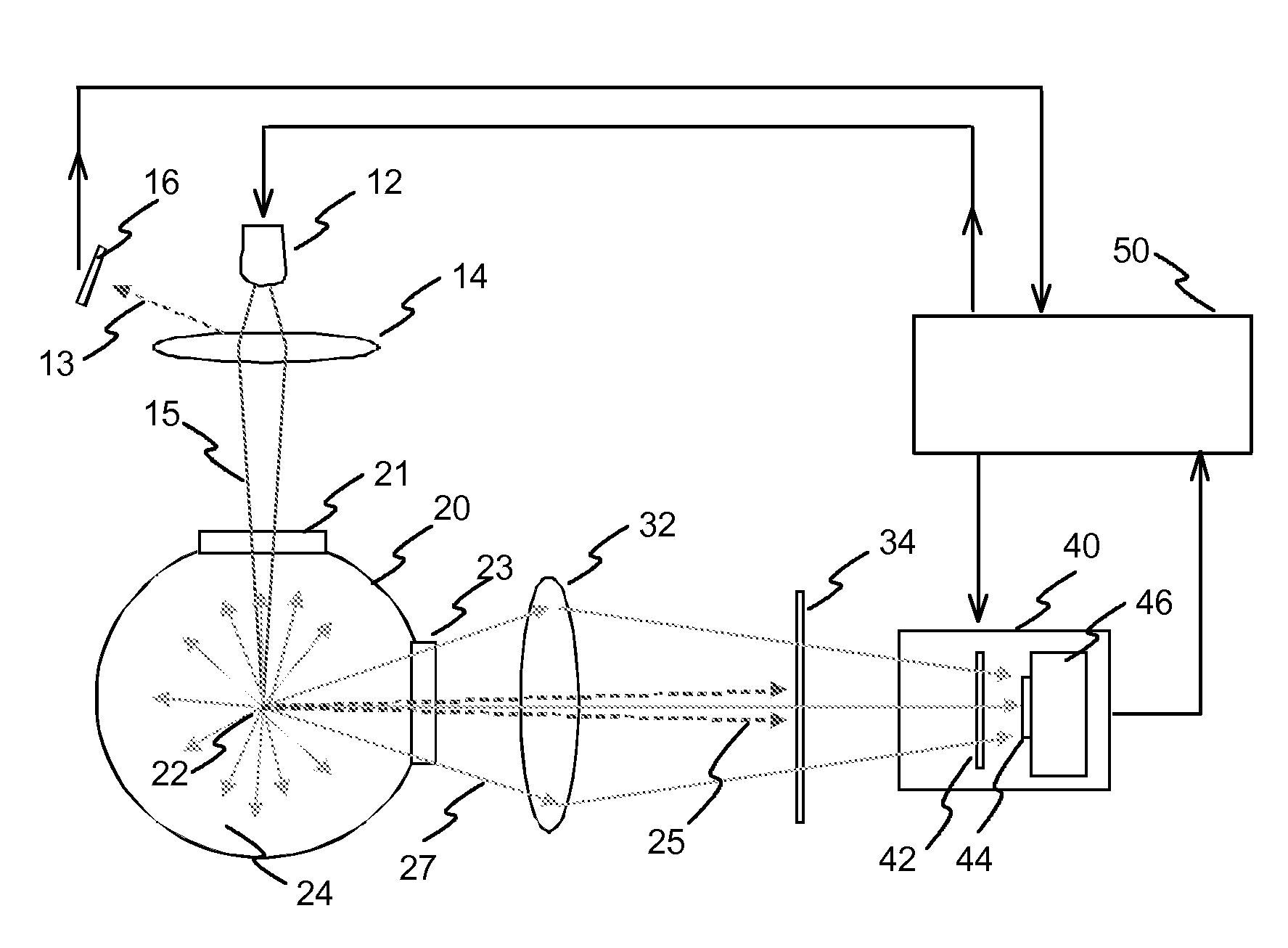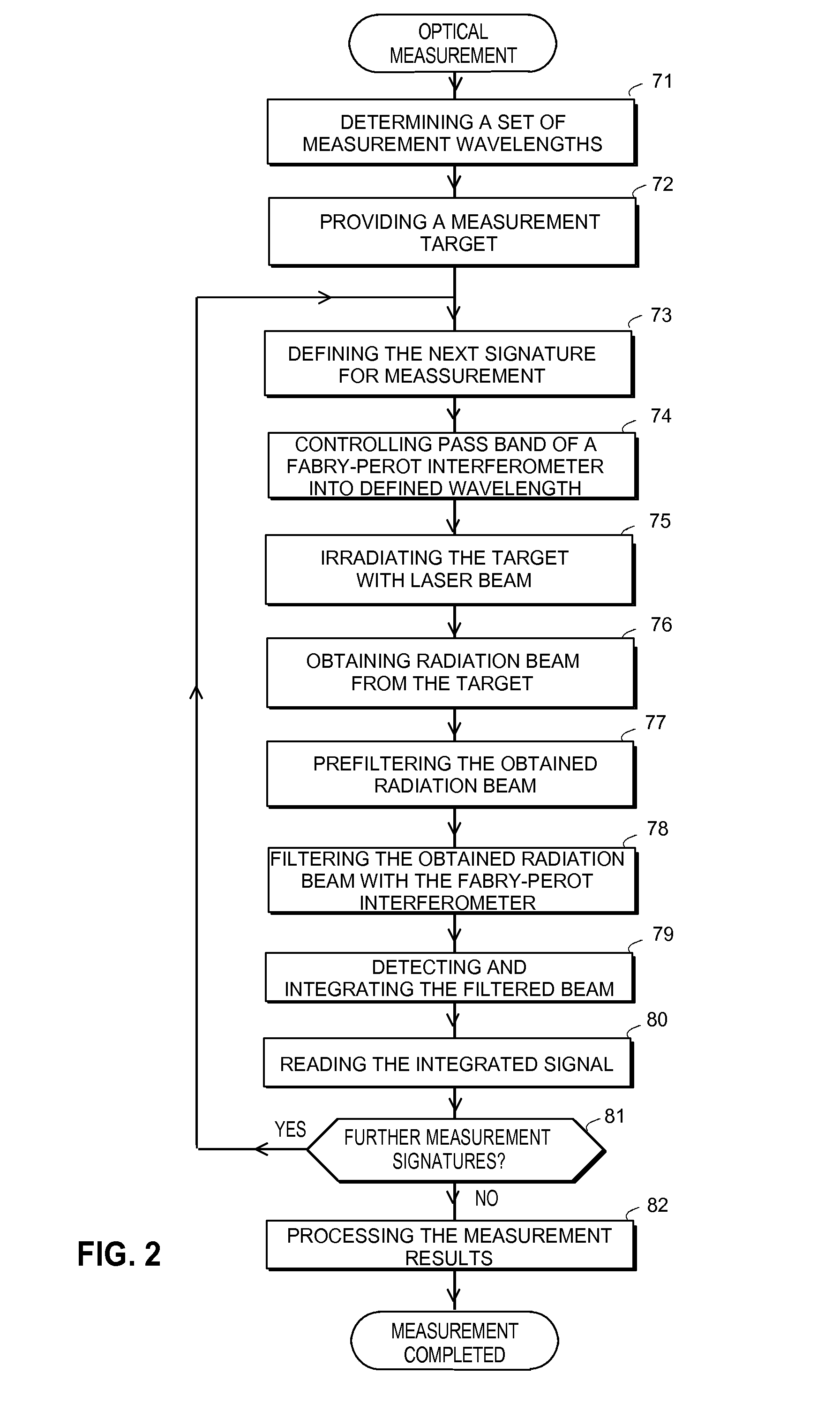Device and method for optical measurement of a target
a target and optical measurement technology, applied in the direction of optical radiation measurement, instruments, spectrophotometry/monochromators, etc., can solve the problems of insufficient information on sulphur content, large instruments, and high cost, and achieve low cost, low cost, and the effect of small power consumption of measurement equipmen
- Summary
- Abstract
- Description
- Claims
- Application Information
AI Technical Summary
Benefits of technology
Problems solved by technology
Method used
Image
Examples
Embodiment Construction
[0039]FIG. 1 illustrates an exemplary measurement device according to the invention. The device has a laser radiation source 12. The radiation source is preferably a laser diode. The output optical power can be e.g. within range 5-50 W, such as 20 W. The radiation source is controlled with control means, such as a microcontroller 50. The radiation beam 15 of the radiation source is focused into a measurement point 22 with a lens 14. There may also be a filter (not shown in FIG. 1) within the path of the activation radiation beam. A filter can be used for blocking possible disturbing radiation on other wavelengths from reaching the measurement space. The device may also have a separate photo detector 16 for monitoring the intensity of the radiation provided by the radiation source. The photo detector 16 may measure radiation 13 reflected from the lens 14, for example. The measurement of the radiation output can be used as a feedback by the control means 50 in controlling the laser di...
PUM
 Login to View More
Login to View More Abstract
Description
Claims
Application Information
 Login to View More
Login to View More - R&D
- Intellectual Property
- Life Sciences
- Materials
- Tech Scout
- Unparalleled Data Quality
- Higher Quality Content
- 60% Fewer Hallucinations
Browse by: Latest US Patents, China's latest patents, Technical Efficacy Thesaurus, Application Domain, Technology Topic, Popular Technical Reports.
© 2025 PatSnap. All rights reserved.Legal|Privacy policy|Modern Slavery Act Transparency Statement|Sitemap|About US| Contact US: help@patsnap.com



